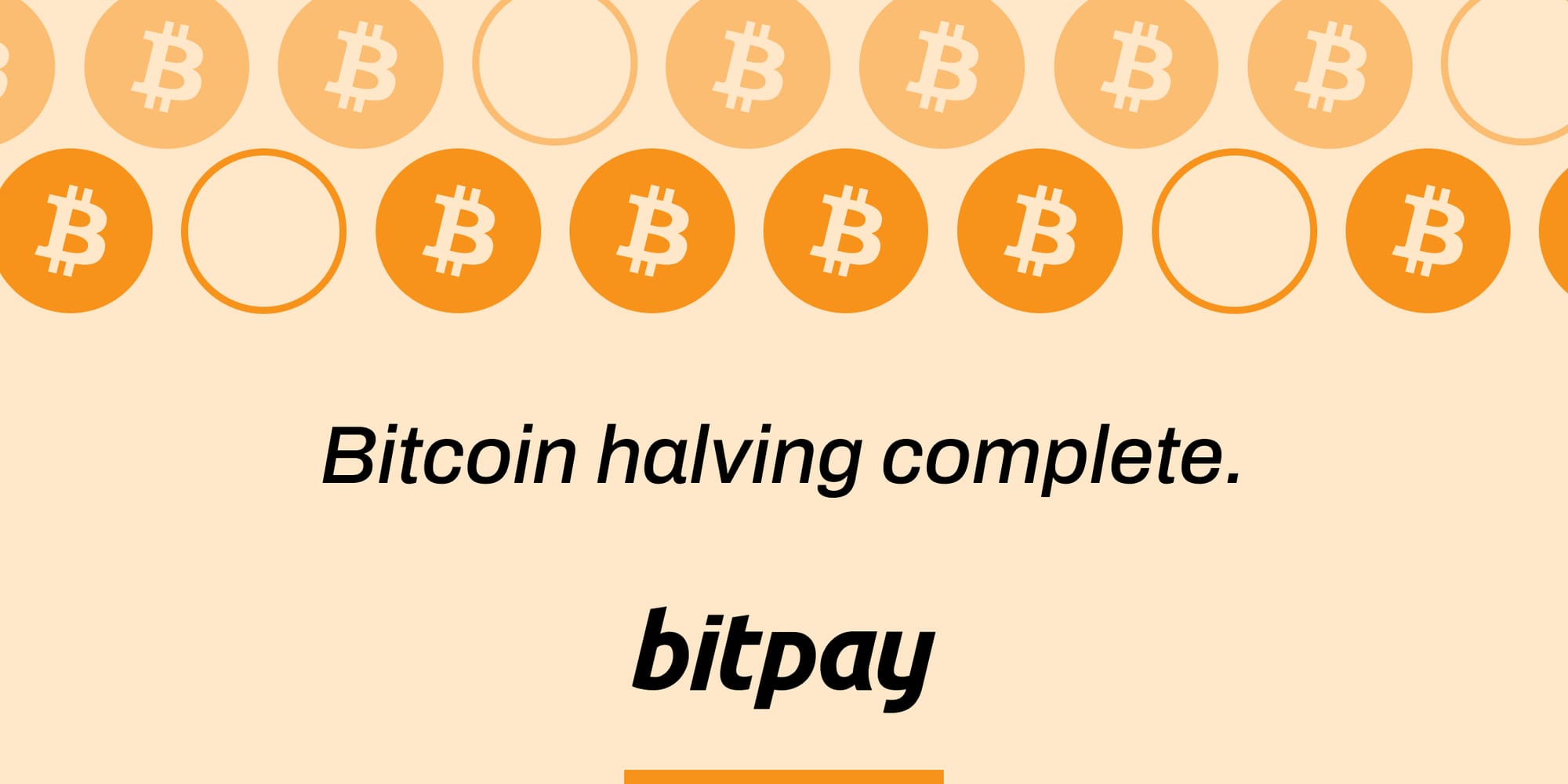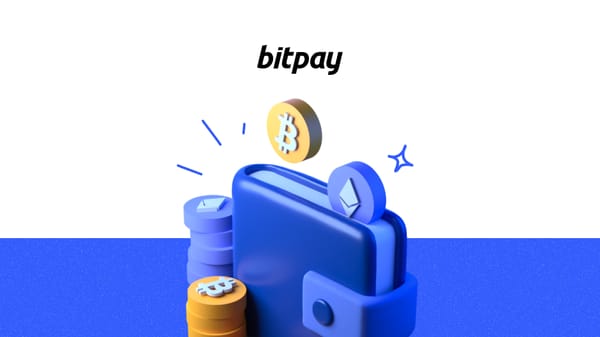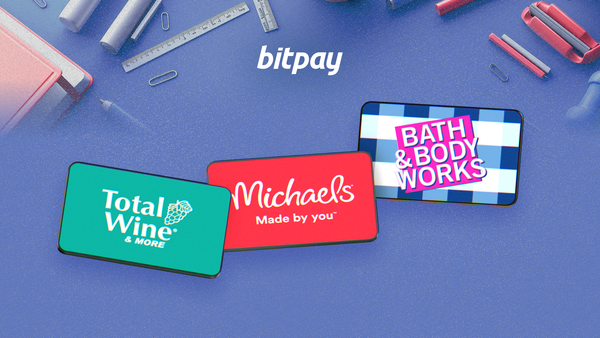- With each halving, the reward paid to Bitcoin miners is reduced by 50 percent, increasing demand while reducing supply.
- Halvings have historically had a significant impact on both the price of Bitcoin and the broader crypto market, affecting miners, users, investors and merchants in different ways.
Cryptoworld has been abuzz for months about the impending arrival of the fourth Bitcoin halving, which finally happened on April 19th. This means the reward paid to Bitcoin miners has dropped from 6.25 BTC to 3.125 per new transaction block. Crypto enthusiasts have been watching to see what the impact will be of this rare and historic event, not just on the price of Bitcoin, but the entire market. Crypto-friendly merchants are also watching closely, eager to learn what effect the halving could have on their business. Ahead, we’ll delve into the significance of Bitcoin halvings, how they work and what investors, consumers and businesses can expect from the most recent one.
What happened during the halving?
New Bitcoins enter circulation through a process called mining. When a Bitcoin transaction is initiated, network participants called miners take on the task of validating them before they can be bundled into blocks and added to the chain. Miners are a critical part of the Bitcoin network, and the work they do requires expensive and immensely powerful computers. To compensate them for their efforts, miners earn mining rewards in the form of Bitcoin for each new transaction block they successfully add to the Bitcoin blockchain.
This system of rewarding miners is hard-coded into Bitcoin, and the reward started out as a whopping 50 BTC back in 2009. Because of halving, which is also coded into Bitcoin’s programming, the miner reward decreases by half at regular intervals — every 210,000 transaction blocks — which happens roughly every four years.
Halving was included in the nuts and bolts of Bitcoin to ensure it remained a deflationary currency, meaning one that increases in value over time as its supply diminishes. There will only ever be 21 million Bitcoins, of which approximately 19.4 million have already been mined. Halving slows the introduction of new Bitcoins into circulation, which keeps the value of existing coins higher. It took only 15 years to mine the first 19.4 million Bitcoins, but it will take an estimated 115 more years to mine the remaining 1.6 million. This is in large part due to the halving cycle, which is expected to continue until the year 2140.
Between the first halving and the fourth, the price of Bitcoin went from $12 in 2012 to topping $70,000 for the first time ever in 2024.
How will this impact the crypto ecosystem?
Ultimately, the principle behind halvings comes down to simple supply and demand. Take a finite resource like Bitcoin, restrict its supply and as a result the price will most likely increase along with demand.
When a Bitcoin halving occurs, the impacts have historically been felt long after the actual event. The 12-18 month period following the three previous halvings have generally seen an increase in price volatility, which eventually gives way to the market setting a new, higher floor price for the asset. Miners themselves, along with organizations who hold a lot of BTC on their balance sheet, tend to be the most impacted by halvings.
It’s important to note that while historical patterns can be used to make informed predictions about the future, the most recent halving differs from its predecessors in several important ways. For starters, cryptocurrency has gotten a huge amount of attention and press coverage over the last year, both good and bad. In the last 12 months alone we’ve seen a bevy of regrettable Super Bowl ads and the high-profile meltdown of FTX and subsequent incarceration of its founder Sam Bankman-Fried. At the same time, the approval for Bitcoin ETFs kicked off a monthslong bull run prior to the halving which saw the price of Bitcoin reach $70,000 for the first time ever.
What do Bitcoin users or merchants need to know?
Due to the volatility that has accompanied every previous Bitcoin halving, you’ll want to keep a few things in mind whether you’re buying, spending or accepting Bitcoin around the time of a halving.
For investors/users/spenders
Keep an eye on market swings, but don’t try to time the market, because you won’t be able to. If you’re following investing best practices, you only have money in the market you can afford to lose. That said, nobody likes losing money, so establish your risk tolerance before the waters get too choppy. You can remove emotion from the equation by choosing an exit point when you’ll sell to skim profits or to avoid a steeper loss.
If you’re buying into the post-halving volatility, consider a dollar-cost averaging strategy that will help you ride out dips while capitalizing on price spikes.
If you’re planning on cashing out or spending your crypto, familiarize yourself with your choices ahead of time so you can move quickly to minimize losses, maximize profits or purchase when your spending power is highest.
- Spend directly from your wallet with merchants accept crypto payments
- Buy gift crypto-powered gift cards for 250+ brands and retailers
- Pay off credit card debt, car payments, mortgages, and more bills
For merchants that accept crypto payments
Crypto consumers change their spending habits as the price of Bitcoin rises or falls. When markets are bullish, longtime Bitcoin holders often spend more crypto. In the 12-month period following the last BTC halving, internal BitPay data showed a 52% increase in payments processed. Nearly every industry experienced a rise, but some such as luxury goods, automotive, nonprofit, precious metals, retail and consumer electronics, significantly outperformed this baseline, several experiencing triple-digit increases. Keeping an eye on market conditions is also important for merchants because it’ll give you an idea when to expect a rush of crypto customers, as well as clues about the right time to cater to them.


